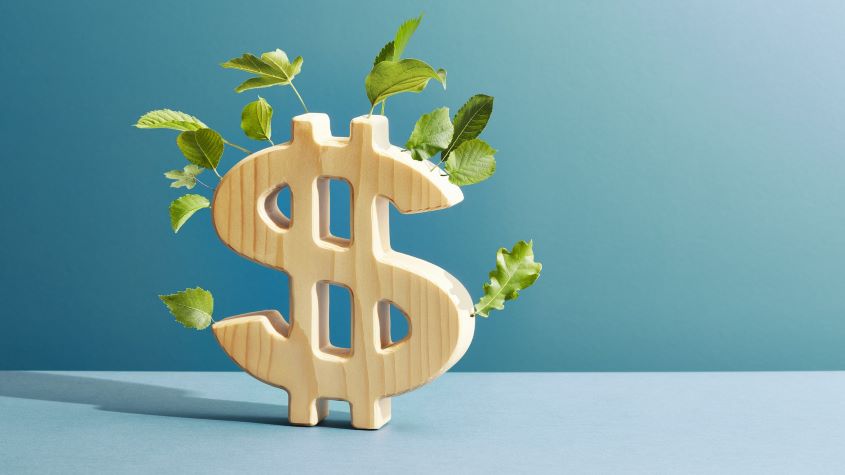Pick up this rare bargain
It’s hard to find growth stocks at a reasonable price in the US market, says Matthew Partridge. Here’s one that fits the bill.


It's hard to find growth stocks at a reasonable price in the US market. Here's one that fits the bill.
One of the big problems with the US market at the moment is that the historically high valuations mean there are very few bargains around. Indeed, it is amazing to note that in the entire S&P 500 there are only 12 stocks that have current price/earnings ratios in single figures, representing just 2.4% of the entire index.
The most interesting of these dozen is Micron Technology (Nasdaq: MU). It is currently valued at only five times 2018 earnings, the sort of valuation that you'd associate with a company that is struggling to stay alive.
MoneyWeek
Subscribe to MoneyWeek today and get your first six magazine issues absolutely FREE

Sign up to Money Morning
Don't miss the latest investment and personal finances news, market analysis, plus money-saving tips with our free twice-daily newsletter
Don't miss the latest investment and personal finances news, market analysis, plus money-saving tips with our free twice-daily newsletter
However, instead of being on the brink of bankruptcy over the past few years, Micron has experienced breakneck growth, with revenue growing from $9bn in 2013 to $20bn last year a compounded growth rate of 22%. This growth is expected to continue in the short run, with revenue expected to reach $28bn this year.
Earnings have also grown at a rapid pace, more than doubling since 2014. At the same time, the company has also beaten analysts' expectations in the past few quarters, and management has started to revise up its guidance, another positive sign.
Make money from memory
So why is this company still trading at a very cheap multiple of its earnings? The problem is that Micron manufactures the components involved in computer memory. This is a notoriously volatile industry that is prone to boom-bust cycles that can leave firms struggling. It is also facing competition from low-cost manufacturers. However, if you look at the financials, you can see Micron has done a decent job of staying ahead of the competition, with gross margins of more than 40% and double-digit returns on capital.
The company has also been working to stay at the cutting-edge of technology. It recently unveiled a new 3D memory-storage chip 50% faster than its current products, which will help smartphone manufacturers add memory-intensive features such as facial recognition. At the same time it has been working on keeping costs under control, and making moves to diversify into areas such as cloud storage, in preparation for when memory markets turn down.
Micron's shares also look attractive from a technical perspective, as they are only slightly below their 52-week high and above their 50-day moving average. Overall, I'd suggest you buy Micron at $48.31. While IG Index's minimum is £0.24 per $0.01 (or £24 per $1), I'd suggest you consider a slightly higher level of £30 per $1.In this case, I'd suggest a stop loss of $32, two-thirds of the current price. This gives you a potential downside of £489.30.
How my trades are doing
This last fortnight demonstrated the danger of short-term trading. Almost immediately after we went to print two weeks ago, the S&P 500 rallied and has now gone above the 2,773 level that I put as the stop loss on our short position. This leaves us with a loss of exactly £500. Worse, bitcoin has rallied to $10,697, not that far from the level at which I tipped it. This means the notional profit from the trade is now only £132. Both IG Group and Renault have gone up slightly, increasing our profits to £452 and £223 respectively, while Hammerson continues to fall, which means our losses are £228.
However, Petrobras continues to soar, with the New York-listed ADR rising to $14.39, more than 80% higher than the level I originally tipped it at last summer, producing profits of £820. This is partly down to a rising oil price, but also due to several Brazilian politicians openly talking about selling the government's stake in the oil company. This pushes the profit on our open trades (excluding the S&P 500 short) to £1,344. This is a bit more than the losses on our closed trades of £1,014, leaving us with an overall profit of £330.
With our remaining positions, I'm going to stick with the status quo for IG Group and Renault. I'm also going to give Hammerson one more chance, but if it doesn't start improving, then I will recommend that you take your losses. I still think the bitcoin bubble hasn't fully burst, so I recommend you sit tight for now. The big question is Petrobras. At ten times 2018 earnings, and at a 7% premium to book value, it is no longer a value play. However, it still trades at a big discount to other major oil companies. So I'm going to increase the stop-loss to $12 (the 50-day moving average).
Trading techniques: why it can pay to follow the shorts
Looking at recent price changes is one way to measure sentiment. But another way to do so is to look at the behaviour of short sellers. Short sellers bet on the price of a share falling. They do this by borrowing a share from its owner and then selling it to a third party, hoping that they can buy it back at a lower price. Short interest measures the number of open short positions over the total number of shares. So if a company has a short interest of 10%, it means that short positions are equal to a tenth of the total shares outstanding.
A high short interest implies the market has a heavily negative view of a company, though the investment implications of this vary depending on whom you ask. Contrarian investors would argue that a high short interest is a positive sign because it suggests a particular stock is oversold. They would also point out that short sellers are vulnerable to a "short squeeze". This is where a sudden rise in price leads to short sellers rushing to cover their open positions by backing their shares to avoid further losses. This in turn could end up pushing the price even higher, further increasing their losses.
However, studies suggest that in this case it might pay to follow the crowd (or at least one part of it). Paul Asquith of the Massachusetts Institute of Technology found that, between 1988 and 2002, the stocks that had the highest level of short interest subsequently lagged the market by 2.15% a year. One possible explanation for this finding is that, because short selling is psychologically difficult, only the best traders tend to go into this area.
Get the latest financial news, insights and expert analysis from our award-winning MoneyWeek team, to help you understand what really matters when it comes to your finances.

-
 London claims victory in the Brexit wars
London claims victory in the Brexit warsOpinion JPMorgan Chase's decision to build a new headquarters in London is a huge vote of confidence and a sign that the City will remain Europe's key financial hub
-
 The reinvention of the high street – and how to invest
The reinvention of the high street – and how to investThe high street brands that can make shopping and leisure an enjoyable experience will thrive, says Maryam Cockar
-
 The highest yielding S&P 500 Dividend Aristocrats
The highest yielding S&P 500 Dividend AristocratsTips Dividends are a key component of investment returns in the long-term. A portfolio of dividend aristocrats is a great way to build wealth and a sustainable income stream.
-
 2023 will be a bumper year for stocks. Here’s how to play the rally
2023 will be a bumper year for stocks. Here’s how to play the rallyTips Dominic Frisby explains why he thinks the market rally could have further to run in 2023 despite macroeconomic headwinds
-
 Crash? What crash?
Crash? What crash?Sponsored October is often said to be a month of stockmarket crashes. But that's not true for this year, says Max King. A host of positive triggers are lining up for equities, says Max King.
-
 The US stock market – should you put more into the S&P 500?
The US stock market – should you put more into the S&P 500?Analysis Everything went right for the US stock market in the past decade. It will be hard to repeat that as interest rates rise. We look at how attractive the S&P 500 is right now.
-
 The end of cheap money hits the markets
The end of cheap money hits the marketsNews Markets have swooned as central banks raise interest rates, leaving the era of cheap money behind.
-
 The markets say sell, but should investors listen?
The markets say sell, but should investors listen?Analysis As fear grips markets around the world, investors need to have an honest conversation about what they’re comfortable with owning.
-
 Are stocks back in a bull market or is this just a bear market rally?
Are stocks back in a bull market or is this just a bear market rally?News The S&P 500 index gained 17% between its June lows and 16 August, while the Nasdaq Composite rose more than 20%. So are stocks back in a bull market or is this just a brief rally before they resume their slide?
-
 Enjoy the bear market rally while it lasts
Enjoy the bear market rally while it lastsNews Investors seem to think that a weaker US economy will cool inflation and see the Fed relent on interest rate rises. But that optimism may be misplaced, with July’s stockmarket gains looking very much like a bear-market rally.